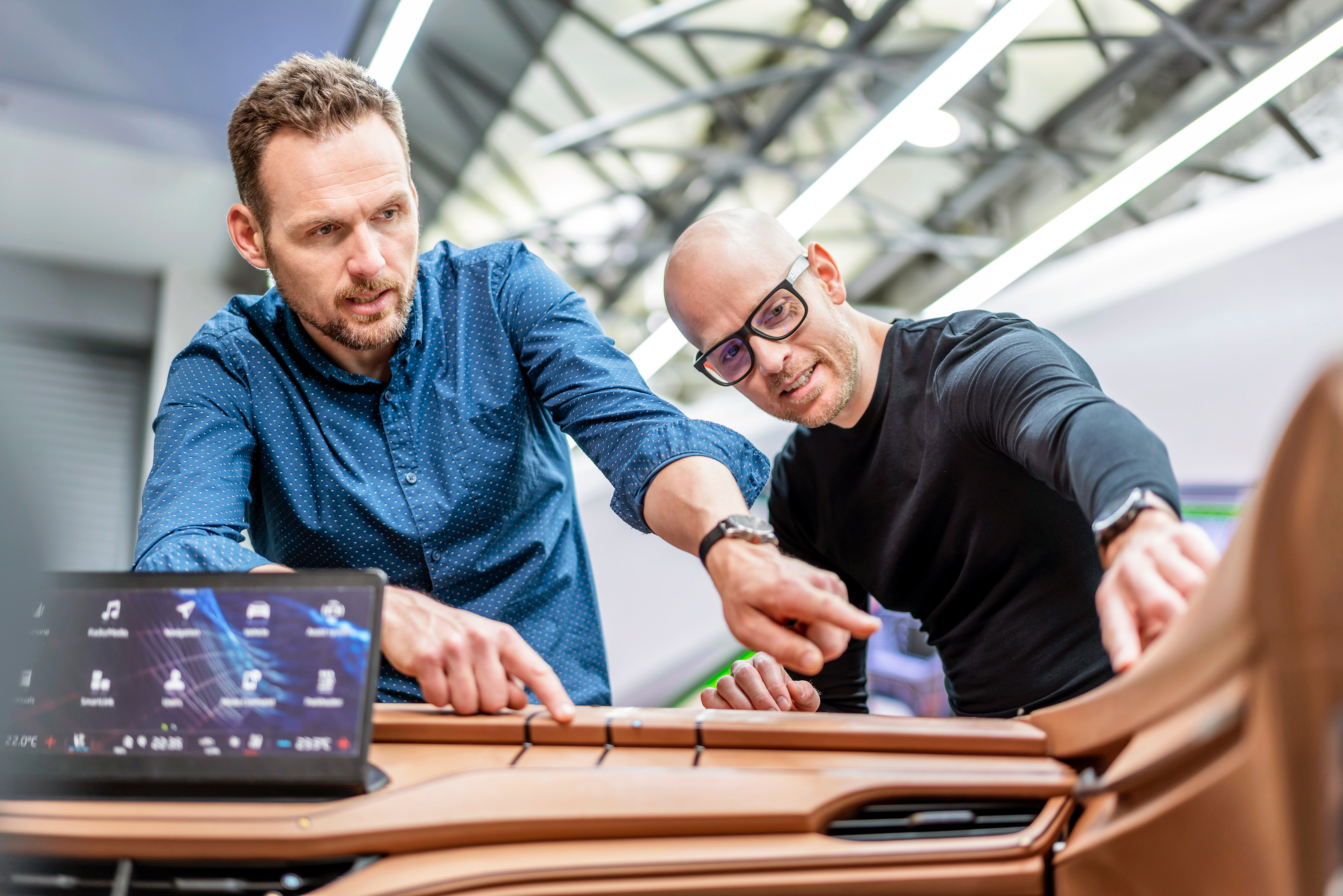Ideas and experience
Cooperation and knowledge of lots of details bring not only improvements in areas that require attention during development for various reasons, but also some new features. “We often work on various Simply Clever details that are part of ŠKODA’s DNA. Sometimes an idea comes from us, as in the case of the phone pouches on the back of the front seat backrests. Other times, the engineers come up with the idea and we work on the design,” Jan Dědek suggests. For the ŠKODA ENYAQ iV SUV, for example, the team worked on the new location of the ice scraper, which is now in the boot lid rather than under the charging connector cover, which remains open for a long time when charging.
 Peter Olah with Jan Dědek and Michal Čermák
Peter Olah with Jan Dědek and Michal Čermák
The ENYAQ iV electric model also bears the imprint of the Feasibility design team’s work. In practical testing of the pre-production car, it was found that the door handle needed modification to be properly ergonomic so that it could be used without any problems. “In a case like that we need to work quickly, but still we didn’t rush into a simple solution that wouldn’t look nice and would confound the original intention. Working with other departments, we made a minor adjustment of the appearance while incorporating the requirements for functionality,” Michal Čermák says, giving an example from practice. Sometimes, though, the team’s work is essentially just about accumulating knowledge that is then put to use on other models. “Changes aren’t always necessary and would be unnecessarily expensive at certain stages. But we make extensive use of the experience we’ve gained,” Čermák adds.
That also means that this work can be done primarily by experienced designers. “You may have good ideas just after you leave school, but not the experience and not that trained eye for detail,” smiles Jan Dědek. “On the other hand, we are also constantly learning new things. There are new challenges, for instance in the form of new materials that we start to work with, and with them we solve things that we haven’t solved before,” he adds. Many of these new details are dealt with together with designers from the Color & Trim department,” explains Dědek.
 Their work isn’t visible at first glance, but it is one of the factors that make ŠKODA cars both sophisticated and practical.
Their work isn’t visible at first glance, but it is one of the factors that make ŠKODA cars both sophisticated and practical.
At the same time, the work is very demanding, because it’s always about compromise. “Often you know how to achieve the beautiful look you want, but you also know that it will cost a lot of money. This leads to heated discussions and the search for compromises. But then it’s amazing to see the result that you bring to production, which on the one hand corresponds to what the designers had in mind, but at the same time bears your imprint in the details,” says Michal Čermák proudly.
“The work of this small team is often invisible, but it is thanks to them that ŠKODA cars are what they are. Sophisticated, with well thought-out details, elegant and practical,” concludes Peter Olah, head of interior design, rounding off our behind-the-scenes look at Feasibility.




































